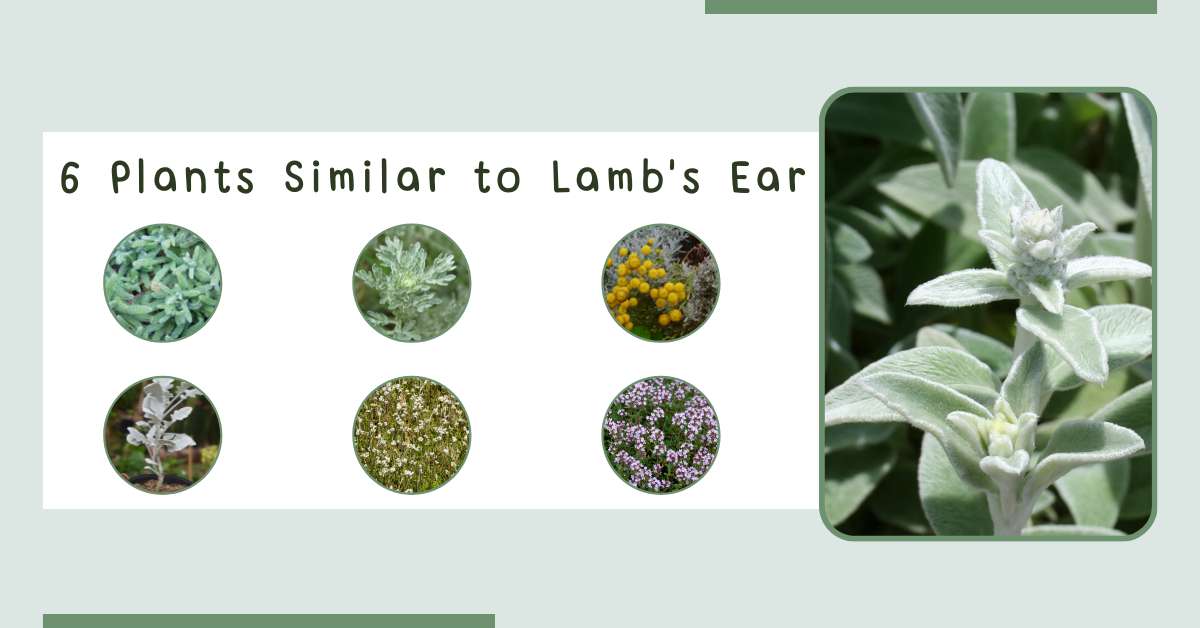If you’re thinking of adding more beautiful plants to your landscape garden, consider adding plants similar to Lamb’s Ear. With its silvery-gray leaves and low-growing habit, lamb’s Ear is often used as a groundcover or filler plant in garden beds and borders.
Suppose you love the look of lamb’s Ear but want to try something different. Several other plants have similar characteristics and can provide a similar textural element in your garden.
In this post, we will discuss 7 plants that resemble the Lamb’s Ear plant, which will help you upgrade your outdoor garden’s visual appeal.
List of Plants Similar to Lamb’s Ear
Here is a list of 6 Plants similar to Lamb’s Ear with detailed explanation about their similarities.
1. Woolly Yarrow(Achillea Tomentosa)

Woolly Yarrow, also known as hairy yarrow, is a perennial plant whose hairy, soft leaves slightly resemble the woolly leaves of the Lamb’s Ear plant.
Another similarity between these two plants is that they are drought-tolerant and thrive in dry, hot conditions. Woolly yarrow is particularly well-suited to dry, rocky soils, while lamb’s Ear is known for its ability to tolerate poor soil conditions and drought.
Both plants can attract bees and butterflies. Like Lamb’s Ear, it can be used as an edging plant along the driveways or in a flower bed along the border. Lamb’s Ear has purple or pink flowers, while Woolly Yarrow has yellow colored beautiful flowers.
These plants are resistant to deer, rabbits, and drought. However, they suffer from rot and powdery mildew.
Woolly Yarrow and Lamb’s Ear can be attractive and drought-tolerant options for a flower bed, but they have different characteristics that may make one plant more suitable for your needs.
2. Artemesia ‘Powis Castle’(Artemisia arborescens x Absinthium)
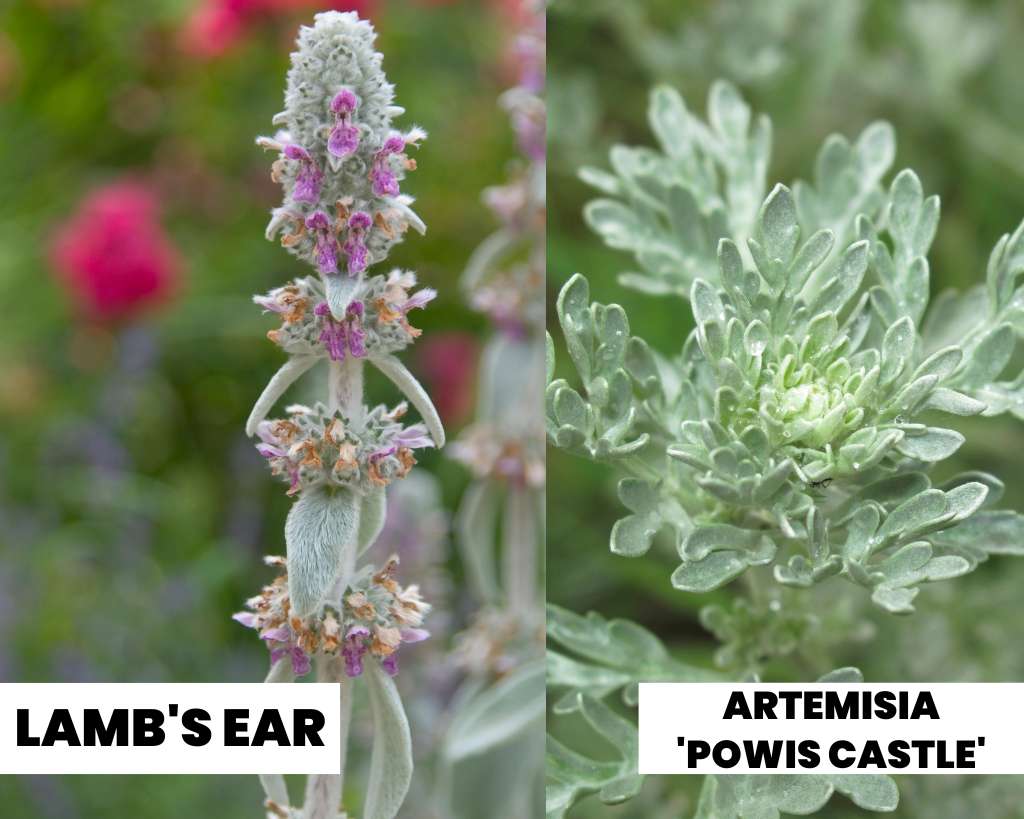
Artemisia ‘Powis Castle’ is a herbaceous perennial that belongs to the Asteraceae family. Artemisia has almost 200-300 varieties, but the ‘Powis Castle’ is known to be the best to last multiple seasons.
This plant shares some common similarities with Lamb’s Ear. Like Lamb’s Ear, the foliage color is similar, but the shape and texture differ. Both plants require identical conditions to grow well.
Both plants can be used in a landscape garden to add texture, color, and interest. Lamb’s Ear is a low-growing plant that can be used as a border plant along walkways or garden beds. Artemisia can be used as a backdrop plant in a garden bed or as a focal point in a container garden. The gray leaves of Artemisia and Lamb’s Ear combine well with purple and pink colored plants such as lavender and catmint.
Also Read: Lamb’s Ear vs Mullein: Which is Better for Your Garden?
3. Cotton Lavender(Santolina Chamaecyparissus)
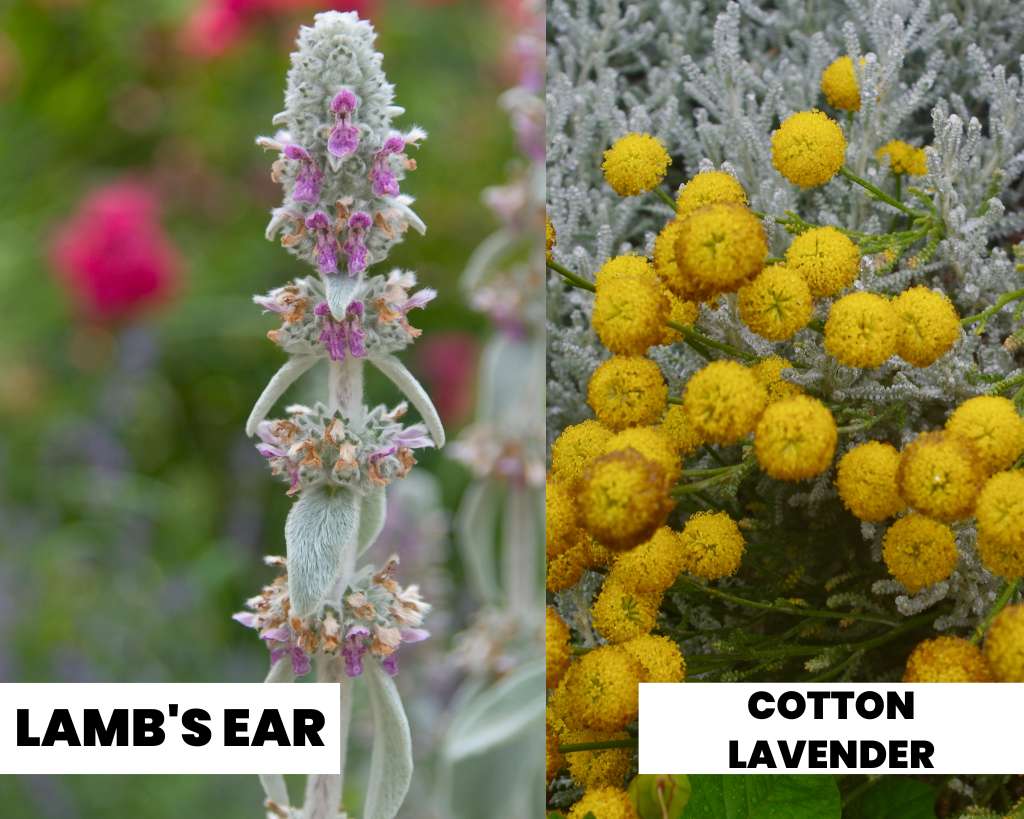
Cotton Lavender, also known as Santolina, is a drought-tolerant shrub whose silver-gray leaves are similar to the leaves of the Lamb’s Ear plant. Both plants’ flowers are different in color, although both are grown for their foliage.
Like Lamb’s Ear, Cotton Lavender is a drought-tolerant plant that mainly grows well under full sun to partial shade with well-drained soil. Some gardeners prefer both as companion plants because of their similar growing conditions, and the yellow blooms of Cotton Lavender and Purple colored flowers of Lamb’s Ear look good when planted next to each other.
Both plants are equally resistant to diseases and pests. Additionally, pollinators are attracted to the blooms of these plants, which in return benefits the whole garden.
4. Dusty Miller(Senecio Cineraria)

Dusty Miller is one of those plants similar to Lamb’s Ear that causes serious confusion. Both plants look identical because of their silver-gray foliage. This fundamental similarity is why these attractive plants are often grown as border plants or ground covers.
These plants prefer almost the same growing conditions to thrive. Like Lamb’s Ear, Dusty Miller is known to resist deer and rabbits. It is also well suited for xeriscape gardening. Can it combine well with Lamb’s Ear? Well! Yes, both plants are excellent for growing next to each other due to their similar growing habits.
5. Pussytoes(Antennaria dioica)
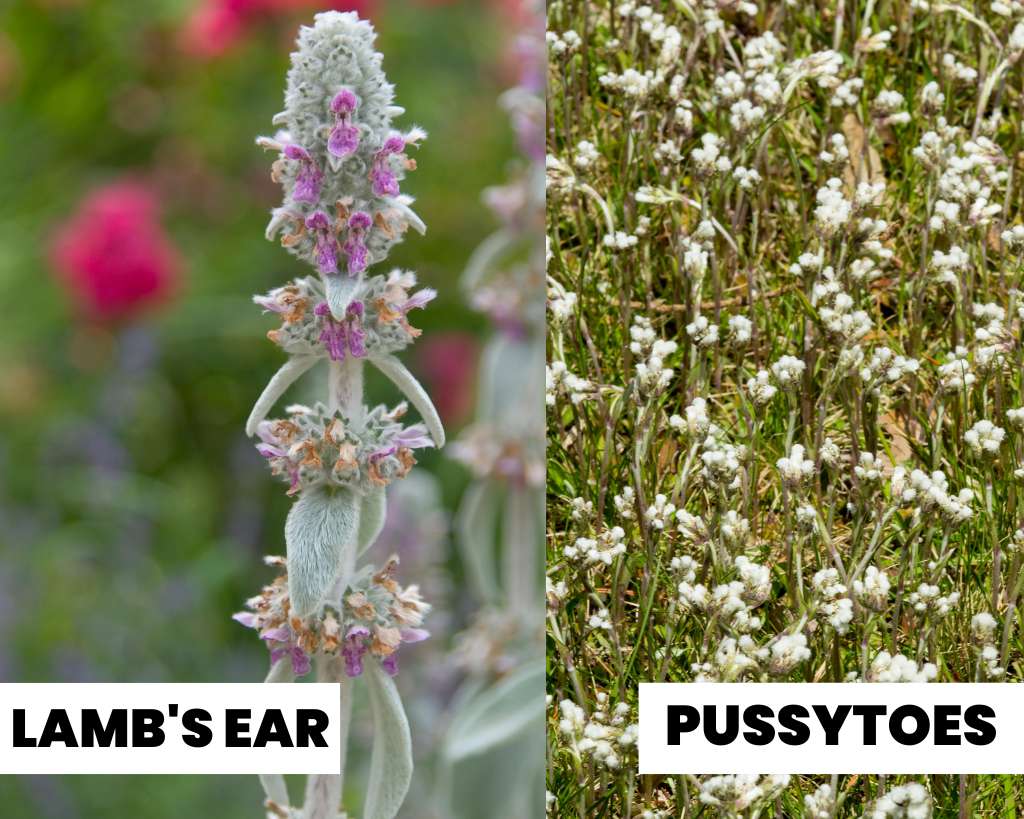
Another perennial groundcover plant similar to Lamb’s Ear is Pussytoes, which has the same silver-gray fuzzy foliage that resembles Lamb’s Ear at first glance.
Both plants are native to Eurasia and are often used in gardens as ground cover or decorative plants. They both have a low-growing habit and are known for tolerating dry conditions.
Also Read: Lamb’s Ear vs Comfrey: A Head-to-Head Comparison
6. Woolly Thyme(Thymus pseudolanuginosus)
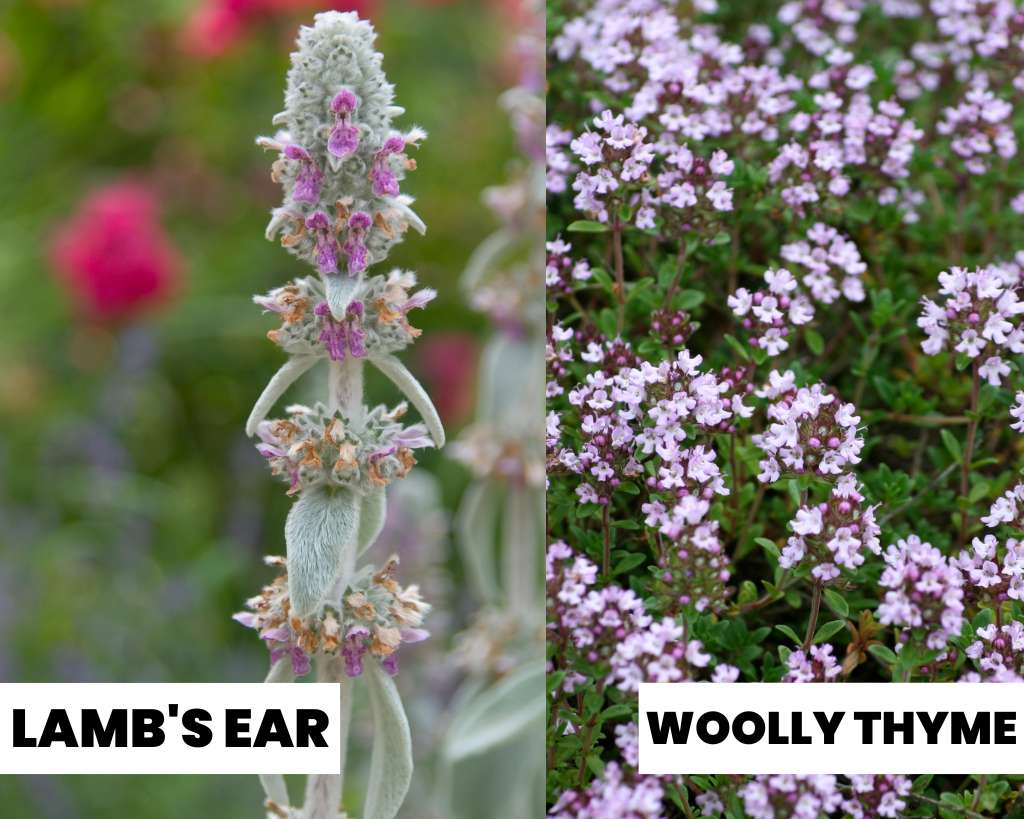
One of those fascinating species of thyme known to be the wooliest of all. Like Lamb’s Ear, Woolly Thyme is a drought-tolerating hardy perennial, perfect for xeriscape, rock, and gravel gardens.
Its hairy gray foliage and little purple flowers share similarities with the foliage and blooms of the Lamb’s Ear plant. Both plants require the same growing conditions to thrive, and they are grown primarily in the same USDA hardiness zones of 4 to 8.

